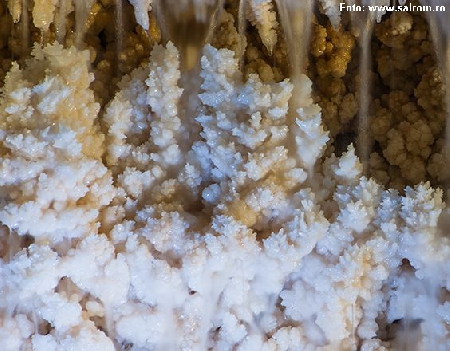Salt in the Romanian Folk Tradition
In the old times salt used to be highly valued and nobody could afford wasting it.

România Internațional, 08.02.2013, 15:57
In the past, kind people used to be called “the salt of the earth”. There is also an old saying: “if you spill salt you’ll have bad luck”. In each peasant’s household there used to be a block of salt also known as salt lick which animals licked when returning home. The need for salt made people build settlements near rivers and salt lakes. And this is how the old salt roads developed, which started from the Carpathians and led to far away destinations.
Sabina Ispas, the director of the “Constantin Brailoiu” Ethnography and Folklore Institute in Bucharest, has more details: “In the Middle Ages salt used to be a princely revenue, a revenue of the king. The king was the one who sometimes granted to monasteries and certain personalities or social structures the right to levy a salt tax, the right to have salt. It is well know that in the year 1222 the salt exploitation and transport on the Mures River was leased to the Teutonic Knights. In Bucharest one can still find today the Salt Road that crossed the capital, on which salt was transported to various places. Transportation of salt, which was sensitive to humidity, on the Mures River entailed the construction of special carriers that were supposed to protect it. Salt was also transported by means of beasts of burden or people simply carried salt on their backs. Salt used to be traded at fairs. We should not forget that the word salary is derived from the old meaning of the soldiers’ pay which consisted in a certain amount of salt…”
In Romanian folk culture salt appears in several tales of which “Sarea in bucate”- “Salt in Food” is the most famous. In the tale, an emperor has 3 daughters whom he rewards in accordance with how much love they feel for their father. The youngest of them is thus punished as she said she loved his father like salt in food…science today confirms the wisdom behind the apparently strange words of the emperor’s daughter, since salt is indispensable to humans.
Sabina Ispas: “When Dacia was conquered by the Romans, salt exploitation was as important as gold exploitation. Rush lights and grinders are still preserved from the time of those salt exploitations. The old Romanian legislation included forced labor in salt mines or pits as a form of punishment. Those who were forced to work in salt mines, although they had been exempt from the death penalty, had to live in hard conditions. Some of those who worked in salt mines had the talent to shape salt in artistic forms, which were later put on display. The ethnography and folklore institute in Bucharest has been included, for several years, in a European program called ‘The Mine Memory’. As part of this program the institute chose to focus on salt exploitation simply because it consider it an old traditional occupation on the Romanian territory going back in time thousands of years.”
A very well know ritual in which salt is used is that of welcoming guests with bread and salt as a sign of love, prosperity and kindness.





























